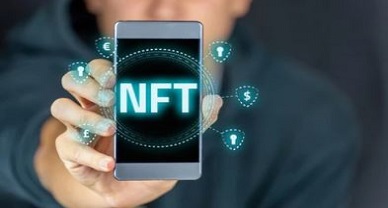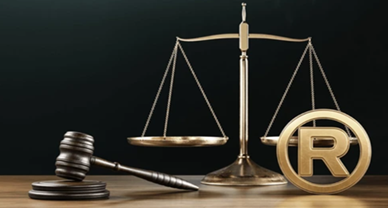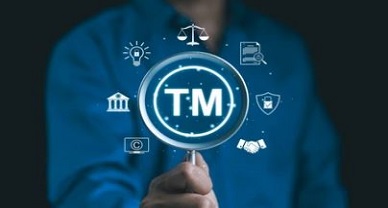A Year Since Hermès Verdict: The Tussle Between Trade Mark Rights and Artistic Freedom Continues
Introduction
On February 8, 2023, the jury returned its verdict in the infamous case Hermès vs Rothschild[1], a significant precedent that has received acclamation and flak alike. The verdict is testimony to a paradigm shift in Trademark Protection and a watershed judgement in navigating the scuffle between the rights of two sections- the commercial rights of ‘business class’ and freedom of expression vested with the ‘artists and creators’.
Trademark rights grant the owner the exclusive right to use the mark in connection with the goods or services it covers. This means that others cannot use the same or similar mark in a way that may cause confusion among consumers. This exclusivity, however, often meddles with the freedom of expression, a fundamental right recognized by many jurisdictions that allows individuals to express themselves without ‘unreasonable restraint’. The advent of state-of-the-art technology has especially brought this tussle to the fore, exacerbating the conflict between the two competing rights.
This article shall attempt to analyse the verdict in the Hermès case and highlight other legal developments around the world that furnish valuable insights on the intersection of trademark protection and works of artistic expression. Finally, the article concludes with the author putting in her two cents’ worth on the role of courts in deciding such disputes.
Hermès vs Rothschild: A Bird’s Eye View
Before going over the verdict with a fine-tooth comb, here is a brief recollection of facts for the readers (it’s been more than a year after all). The dispute revolved around an antediluvian luxury handbag brand ‘Hermès’ and artist Mason Rothschild for his avant-garde creation called MetaBirkin NFTs. The former sued the latter for creating the digital versions of its iconic Birkin handbags and making sales out of the company’s good will, thereby, alleging the creator for trademark infringement, trademark dilution and cybersquatting of the brand’s protected trademark rights.
The nine-person jury made two important observations. Firstly, it unanimously found the creator of MetaBirkin NFTs guilty of trademark violation on all three counts. Secondly, it refused to recognize those non fungible tokens as an ‘Art’ and held them disentitled for any protection under the ‘First Amendment’. The luxury brand was thereof awarded damages totalling to $133,000, inclusive of $23,000 in statutory damages and the net profit of $110,000 made by Rothschild through an unauthorized use of brand’s trademark in his NFT project[2].
Though the verdict throws much light on the limits of artistic freedom and can provide more guidance for the brand owners and artists on the line between commercial goods and artistic works, I concisely put out three important considerations that could have been given much more deliberation. Firstly, the premise of the Hermès-favoured verdict was the similarity between its bags and Rothschild’s NFTs and the ability of the latter to cause confusion among the buyers. However, it is unlikely that people with deep pockets who often find themselves in the waitlist for Hermès bags be fooled by virtual unaffiliated products in the NFT market. Secondly, by refusing to recognise NFTs as ‘Art’, the jury went with a very narrow interpretation of what is ‘Art’ and who qualify as ‘Artists’. The word Art cannot be limited to its ascribed traditional meaning and its extent should be deciphered taking into account the perpetually evolving technology. Thirdly, Hermès being a cultural symbol of opulence and rarefied status, can be fairly utilized for the portrayal of consumerism and wealth in artistic endeavours[3].
Other Developments Around the World
In a case involving a manufacturer of a luxury handbag brand (applicant), the Landgericht (LG) Frankfurt, a regional court in Frankfurt accentuated the inherent limitations of trademark protection by allowing a fashion label (respondent) to use some defining features of the registered trademark of the handbag company to portray ‘female cliché’ in a fashion show that highlighted how women are subject to male objectification and treated as mere accessories.
This judgement of LG Frankfurt, though might not be considered ‘landmark’, is definitely worth a mention for it necessarily outlined the desideratum of striking a right balance between these two discordant rights. Any engagement with a registered trademark can be well covered within the purview of artistic freedom, if such reference forms an essential part of the production of an artwork and does not degenerate or disparage the applicant’s trademark, the court noted.
On the lines of Hermès verdict, a federal court in the US in Yuga Labs vs Ryder Ripps denied the defendant the protection of ‘free speech’ when he was accused of counterfeiting plaintiff’s NFTs. While denying the claims of artistic freedom, the court held his NFTs to be uncannily similar and capable of causing confusion for consumers[4].
Tarantino vs Miramax, another case in the NFTs popularity era that brought to the light copyright implications in the backdrop of NFTs boom. Quentin Tarantino sold screenplay scenes of his 1994 film as NFTs which was opposed by Miramax, contending that his limited right to screenplay did not extend to minting of NFTs associated with Miramax’s intellectual property. The dispute, however, did not reach the trial stage and was settled by the parties[5]. The case, had it proceeded, could have set a decisive precedent for ever emerging disputes on film NFTs. Whether such sale rights of NFTs are guaranteed under artistic freedom or bound by the limits of intellectual property laws remain unanswered, perpetuating the conflict.
The above disputes, though divergent in their facts, jurisdiction and ratio pose similar questions and doubts. The extent to which the artistic freedom can be curtailed for brand protection or vice-versa is not defined in various jurisdictions, owing to the lack of laws addressing this conflicting issue or/and a binding precedent. Courts are flooded with such disputes and they therefore hold pre-eminence in this interplay.
The Courts Shoulder Great Responsibility in Navigating the Conflict
Achieving a perfect balance between trademark rights and artistic freedom is a complex endeavour, requiring careful consideration of legal principles to avoid grave injustice to the parties involved. Trademark rights are designed to protect the commercial interests of businesses by preventing unauthorized use of their brand identifiers, while artistic freedom encompasses the right of individuals to express themselves creatively without undue restriction. These two rights, as discussed before in previous sub-heads often compete and overlap, leading to multiple court cases each year.
Courts should play a crucial role in navigating this delicate balance. They must weigh the competing interests at stake, taking into account factors such as the commercial significance of the trademark, the degree of artistic expression involved, and the potential for consumer confusion. In doing so, courts often apply a multi-factor test that considers the likelihood of confusion, the strength of the trademark, and the degree of transformative expression in the artistic work[6]. Additionally, courts may consider whether the use of the trademark serves a valid artistic purpose or whether it constitutes a purely commercial exploitation of the mark, and while making such decision it should try to strive for a right balance.
Conclusion
The intersection of modern technology with archaic laws governing intellectual property rights often has implications for rights vested with artists and creators as both often collide, giving rise to disputes and court trials. The NFT boom culminated in an important legal battle, Hermès vs Rothschild which though furnished important inputs for this battle of two rights, has left a trail of questions and doubts behind it. From proactive brand protection as in the Hermès case to providing some leverages to the artists and creators, there have been other significant legal developments that guide the trajectory of the conflict and give us impetus to draw the lines between the two incongruous rights in a way where artistic freedom and choices are not unnecessarily stifled to protect commercial interests.
A year has passed since the final verdict in the Hermès case, but the debate on whether trademark rights of businesses outweigh the freedom of expression accorded to artists is nowhere near its end and will remain relevant for many years to come.
Author:- Sakshi Jaiswal, in case of any queries please contact/write back to us at support@ipandlegalfilings.com or IP & Legal Filing.
References
- Adi Robertson, Quentin Taratino Settles NFT Lawsuit with Miramax, THE VERGE (Sep. 09, 2022) https://www.theverge.com/2022/9/9/23344441/quentin-tarantino-pulp-fiction-nft-miramax-lawsuit-settled
- Jeremy S. Goldman, Yuga Labs Wins Key Victory in NFT Infringement Case Against Ryder Ripps, MONDAQ (Dec. 23, 2022) https://www.mondaq.com/unitedstates/trademark/1264300/yuga-labs-wins-key-victory-in-nft-infringement-case-against-ryder-ripps
- Moish E. Peltz, Hermès vs Rothschild: A Landmark Decision for Trademarks and NFTs, MONDAQ (Feb. 24, 2023) https://www.mondaq.com/unitedstates/trademark/1286436/herm%C3%A8s-v-rothschild-a-landmark-decision-for-trademarks-and-nfts
- Zachary Small, Hermès Wins MetaBirkins Lawsuit: Jurors Not Convinced NFTs Are Art, THE NEW YORK TIMES (Feb. 8, 2023) https://www.nytimes.com/2023/02/08/arts/hermes-metabirkins-lawsuit-verdict.html
[1] 22-cv-384 (JSR).
[2] Melanie J. Howard and Jennifer Kahn, Hermès International v. Rothschild, LOEB & LOEB LLP (Jun. 23, 2023) https://www.loeb.com/en/insights/publications/2023/06/hermes-international-v-rothschild
[3] Zachary Small, Hermès Wins MetaBirkins Lawsuit: Jurors Not Convinced NFTs Are Art, THE NEW YORK TIMES (Feb. 8, 2023) https://www.nytimes.com/2023/02/08/arts/hermes-metabirkins-lawsuit-verdict.html.
[4] Jeremy S. Goldman, Yuga Labs Wins Key Victory in NFT Infringement Case Against Ryder Ripps, MONDAQ (Dec. 23, 2022) https://www.mondaq.com/unitedstates/trademark/1264300/yuga-labs-wins-key-victory-in-nft-infringement-case-against-ryder-ripps
[5] Adi Robertson, Quentin Taratino Settles NFT Lawsuit with Miramax, THE VERGE (Sep. 09, 2022) https://www.theverge.com/2022/9/9/23344441/quentin-tarantino-pulp-fiction-nft-miramax-lawsuit-settled
[6] Striking a Balance Between Trade Mark Rights and Artistic Freedom, GRUR International, Volume 73, Issue 5, May 2024, Pages 450–451, https://doi.org/10.1093/grurint/ikae013



